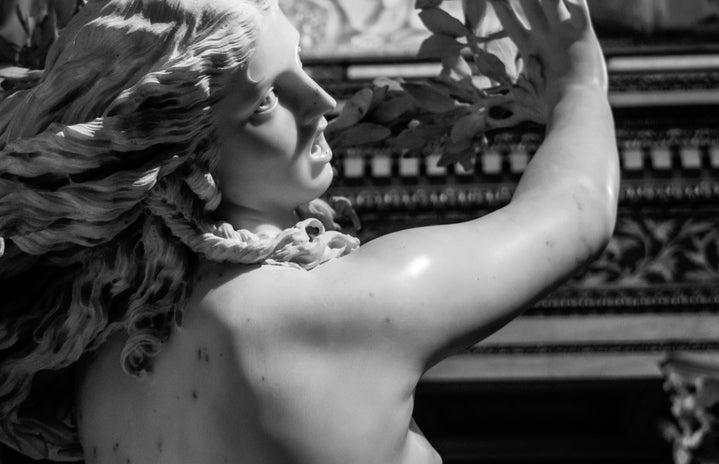It’s no secret that women are underrepresented in the art world; you only need to step into a museum and count the ratio of male to female artists in any exhibition. A 2018 data analysis from Topez et Al, entitled “Diversity of Artists in Major US Museums”, found that across 18 major museums in the United States, collections comprised of 87% male and 85% white artists. The issue of women’s exclusion from the art world is deeply rooted in both historical sexism and social roles.
Widely renowned feminist art historian, Linda Nochlin, wrote that women have been excluded from the old institutions since the 16th century, effectively banning them from training, patronage, and exhibition. During the Renaissance period, artists were expected to create classical and biblical images- very often subjects were painted nude. However, women weren’t allowed access to nude models; they were excluded from life drawing classes in both private and public facilities. Simply put, female artists were ill-equipped to recreate the “important” pieces of historical art, which only contributed to their exclusion from the upper echelons of the art world.
Another major factor in women’s underrepresentation is the historical- and often current- requirement to choose between a career and marriage. Famously, French impressionist painter Berthe Morisot remained single until late in her life, only marrying once her artistic reputation had been established. The most successful female artists of the twentieth century, including Mary Cassat and Rosa Bonheur, remained unmarried for their entire lives. This unfair expectation for women to choose between family and professional life stems from the deeply-ingrained social roles which see women as only wives and mothers. Retired education professor, Jane Piirto, wrote that the life of an artist requires being willing to take rejection, live in poverty, and to be field independent. All of which are socially acceptable for men but not women; making any woman who dares to defy her assigned role a social pariah.
Many of the most historically renowned male artists were notorious womanizers; Paul Gaughin, for instance, abandoned his wife and children in Paris and moved to Tahiti, taking multiple child brides and spreading syphilis in the Native Tahitian community, effectively winning him the award for both ‘worst husband and father of the year’. John Berger is often quoted in popular culture as saying “Men look at women. Women watch themselves being looked at”; paintings by artists such as Renoir and Picasso certainly don’t challenge this generalisation as many depict their female models in a hypersexualised and objectified light. Renoir painted multiple works which portray women completing domestic works naked, which doesn’t exactly smack of a whole lot of respect for women.
The Guerrilla Girls, formed in New York City in 1985, attempt to tackle the overwhelming sexism in the art world through the use of culture jamming- often known as guerrilla communication. Their tactics include books, billboards, posters, and appearances at public events. The group of female artists wear gorilla masks at any public appearance and don pseudonyms, using the names of dead female artists to hide their identities. When asked about increasing diversity within museums, the member known as Frieda Kahlo answered: “…institutions realised they had a problem with diversity, they would show one woman artist and one artist of colour, and think that was taken care of.”
This sort of tokenism does more harm than good, as far as I’m concerned. Gatekeeping women and WOC’s work, often through paid entry, prevents those without the funds or a particular devotion to art from experiencing a diverse range of works. The Guerrilla Girls, on the other hand, sell their posters online for around £20 but the rest of their work is free to access. Ultimately, art is a business and many directors and curators won’t buy the work of women and artists of colour unless it’s viewed as profitable; this fuels the tokenism of exhibiting these artists’ work, with entry fees being charged to ensure profit. The art world desperately needs to normalise and increase the breadth of the artists they exhibit. Diversity shouldn’t be a niche interest.



